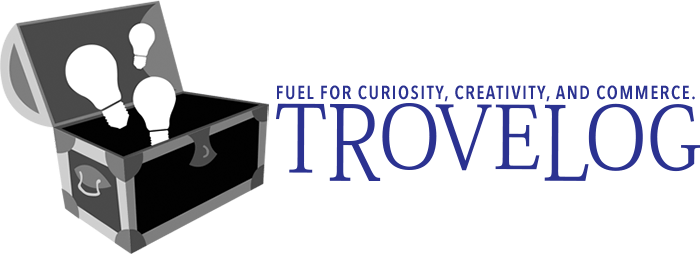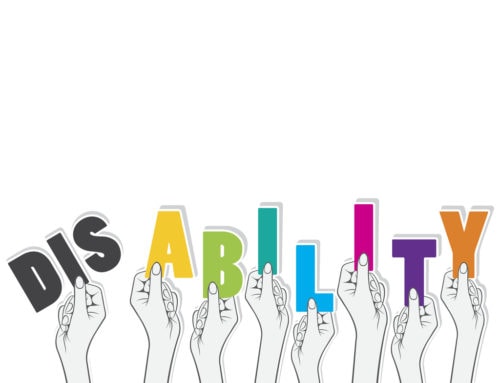thick data: qualitative information and insights gathered from contextual observations of behavior and preferences (e.g., routines, emotions, stories, habits, aspirations, and motivations).
*** TROVELOG ***
Thick data
Residents [of the Barcelona neighbourhood of Gràcia] were learning that data is rarely neutral. The kinds of data gathered, the methods used, how it gets interpreted, what gets overlooked, the context in which it is generated, and by whom, and what to do as a result, are all choices that shape the facts of a matter. For experts building Big Data city platforms, one sensor in one square is simply a data point. On the other side of that point, however, are residents connecting that data to life in all its richness in their square. Anthropologist Clifford Geertz argued many years ago that situations can only be made meaningful through ‘thick description’. Applied to the Smart City, this means data cannot really be explained and used without understanding the contexts in which it arises and gets used. Data can only mobilise people and change things when it becomes thick with social meaning.Noise data in [in Gràcia‘s] Plaça del Sol was becoming thick with social meaning. Collective data gathering proved more potent than decibel levels alone: it was simultaneously mobilising people into changing the situation. Noise was no longer an individual problem, but a collective issue. And it was no longer just noise. The data project arose through face-to-face meetings in a physical workshop space. Importantly, this meant that neighbours got to know one another better, and had reasons for discussing life in the square when they bumped into one another.
. . .
For the Council, technology activists, and residents of Plaça del Sol, data alone cannot solve their issues. Data cannot transcend the lively and contradictory social worlds that it measures. If data is to act then it needs ultimately to be brought back into those generative social contexts – which, as Jordi Giró at the Catalan Confederation of Neighbourhood Associations reminds us, means cultivating people skills and political capacity. Going beyond the Smart City demands something its technocratic efficiency is supposed to make redundant: investment in old-fashioned, street-level skills in community development. Technology vendors cannot sell such skills. They are cultivated through the kinds of community activism that first brought [Barcelona Mayor] Ada Colau to prominence, and eventually into office.See opinion at: Adrian Smith, “Smart cities need thick data, not big data,” The Guardian, April 18, 2018
◄TrovelogTrovelogTrovelogTrovelogTrovelogTrovelogTrovelog►
Tapping into lived experiences requires immersive kinds of data—what anthropologist Clifford Geertz has termed “thick description.” Thick description goes beyond big or hard data to explore how and why people interact in the world—their routines, habits, preferences, motivations, and aspirations. Such intelligence offers starting points for generating ideas and prototyping alternative responses with people. Indeed, where hard data can shed light on the nature of a problem (for example, changing demographics or low service utilization rates), thick data can help to elucidate the types of solutions that are attractive to people and thus more likely to have lasting impact.
Increasingly, private sector companies such as LEGO and Disney are investing in thick data to develop products and services that better reflect user needs and desires. And yet, there has been no equivalent or concerted focus on the data capability of social sector organizations. Sectors such as education and health, however, offer a few helpful clues. For example, AltSchool, a Silicon Valley startup, has hard and thick data at its core. Its two-story buildings feature collaborative learning spaces on the first floor and research labs on the second. Designers, developers, engineers, marketers, and education professors work alongside teachers and students and empower them to capture their experiences, identify patterns and trends, and co-make and test new educational tools, interactions, and pedagogical processes.
See article at: Alex Ryan, Sarah Schulman & Vinod Rajasekaran, “Out of the Lab and into the Frontline,” Stanford Social Innovation Review, Winter 2018
◄TrovelogTrovelogTrovelogTrovelogTrovelogTrovelogTrovelog►
Another reality of modern marketing is the growing prevalence of data, algorithms and automation. In the face of all this quantitative reason, author Christian Madsbjerg [author of “Sensemaking”] issues a passionate cry for humanistic, liberal arts thinking. He believes that over-reliance on data and algorithms creates enormous risks for employees, business and society. What all the data fails to capture, he says, is the critical nuances of culture and context that ultimately drive behavior and lead the way to enduring innovation.
Thick data—not just thin data. Go beyond sterile facts and figures, and seek the contextual detail that provides a richer picture of consumers’ lives, dreams, pains. This is the stuff of great marketing.
See commentary at: Peter Horst, “Two Ways To Bigger Thinking And Bolder Ideas,” Forbes, September 6, 2017
◄TrovelogTrovelogTrovelogTrovelogTrovelogTrovelogTrovelog►
See video at: TEDxCambridge, September 2016 Talk: Tricia Wang “The human insights missing from big data”
◄TrovelogTrovelogTrovelogTrovelogTrovelogTrovelogTrovelog►
For marketers, truly valuable customer data comes in two forms: thick data and big data. Thick data is generated by ethnographers, anthropologists, and others adept at observing human behavior and its underlying motivations. Big data is generated by the millions of touchpoints companies have with customers. To date, thick data and big data have been promoted and employed by very different people. Thick data has been handled by companies grounded in the social sciences. Big data has been promoted by people with analytics degrees, often sitting in corporate IT functions. There has been very little dialogue between the two.
This is unfortunate. Combining the two approaches can solve many of the problems that each category of data faces on its own. Thick data’s strength comes from its ability to establish hypotheses about why people behave as they do. It cannot help answer questions of “how much,” only “why.” Big Data has the advantage of being largely unassailable because it is generated by the entire customer population rather than a smaller sample size. But it can only quantify human behavior, it cannot explain its motivations. That is to say, it cannot arrive at a “why.”
It’s only by combining the two forms of data that a complete picture emerges and real solutions to the strategic problems facing CMOs may be found. As companies start combining thick and big data, they will also stop relying on what has so far been a cornerstone of most customer insights programs—namely endless surveys and focus groups that purport to explain customers’ motivations and attitudes but in reality add very little strategic value.
. . .
To start working successfully with both data types in concert, CMOs need to revisit their customer insights departments as well as establish close ties to CFOs. Many companies are well advised in weak data sources, but unskilled in obtaining and making sense of thick data. Similarly, many companies have no clear strategy for their big data collection, and they end up locking it into different silos or not cleaning it up enough for effective usage.Melding big and thick data together isn’t easy. It requires changing practices, hiring new people, and allocating funds away from familiar ways of doing things. But once you’ve seen the power of real data, you’ll question the millions of dollars wasted on surveys and focus groups.
See article at: Mikkel B. Rasmussen and Andreas W. Hansen, “Big Data Is Only Half the Data Marketers Need,” Harvard Business Review, November 16, 2015
◄TrovelogTrovelogTrovelogTrovelogTrovelogTrovelogTrovelog►
In a generation, the relationship between the “tech genius” and society has been transformed: from shut-in to savior, from antisocial to society’s best hope. Many now seem convinced that the best way to make sense of our world is by sitting behind a screen analyzing the vast troves of information we call “big data.”
Just look at Google Flu Trends. When it was launched in 2008 many in Silicon Valley touted it as yet another sign that big data would soon make conventional analytics obsolete.
But they were wrong.
Not only did Google Flu Trends largely fail to provide an accurate picture of the spread of influenza, it will never live up to the dreams of the big-data evangelists. Because big data is nothing without “thick data,” the rich and contextualized information you gather only by getting up from the computer and venturing out into the real world. Computer nerds were once ridiculed for their social ineptitude and told to “get out more.” The truth is, if big data’s biggest believers actually want to understand the world they are helping to shape, they really need to do just that.
. . .
Now, it is easy to argue – as many have done – that the failure of Google Flu Trends simply speaks to the immaturity of big data. But that misses the point. Sure, tweaking the algorithms, and improving data collection techniques will likely make the next generation of big data tools more effective. But the real big data hubris is not that we have too much confidence in a set of algorithms and methods that aren’t quite there yet. Rather, the issue is the blind belief that sitting behind a computer screen crunching numbers will ever be enough to understand the full extent of the world around us.Big data is really just a big collection of what people in the humanities would call thin data. Thin data is the sort of data you get when you look at the traces of our actions and behaviors. We travel this much every day; we search for that on the Internet; we sleep this many hours; we have so many connections; we listen to this type of music, and so forth. It’s the data gathered by the cookies in your browser, the FitBit on your wrist, or the GPS in your phone. These properties of human behavior are undoubtedly important, but they are not the whole story.
To really understand people, we must also understand the aspects of our experience — what anthropologists refer to as thick data. Thick data captures not just facts but the context of facts. Eighty-six percent of households in America drink more than six quarts of milk per week, for example, but why do they drink milk? And what is it like? A piece of fabric with stars and stripes in three colors is thin data. An American Flag blowing proudly in the wind is thick data.
Rather than seeking to understand us simply based on what we do as in the case of big data, thick data seeks to understand us in terms of how we relate to the many different worlds we inhabit. Only by understanding our worlds can anyone really understand “the world” as a whole, which is precisely what companies like Google and Facebook say they want to do.
See article at: Mikkel Krenchel, Christian Madsberg, “Your Big Data is Worthless if You Don’t Bring it Into the Real World,” Wired, April 11, 2014
◄TrovelogTrovelogTrovelogTrovelogTrovelogTrovelogTrovelog►
At its core, all business is about making bets on human behavior. Which product is most likely to sell, what employee is most likely to succeed, what price is a customer willing to pay? Companies that excel at making these bets tend to thrive in the marketplace.
So it’s no wonder that the latest fad in the business world is Big Data—massive data sets sifted by powerful analytical tools. Big Data can be an extraordinary tool, helping to gather new information about our behavior and preferences. What it can’t explain is why we do what we do.
In fact, companies that rely too much on the numbers, graphs and factoids of Big Data risk insulating themselves from the rich, qualitative reality of their customers’ everyday lives. They can lose the ability to imagine and intuit how the world—and their own businesses—might be evolving. By outsourcing our thinking to Big Data, our ability to make sense of the world by careful observation begins to wither, just as you miss the feel and texture of a new city by navigating it only with the help of a GPS.
Successful companies and executives work to understand the emotional, even visceral context in which people encounter their product or service, and they are able to adapt when circumstances change. They are able to use what we like to call Thick Data.
. . .
Working with Thick Data isn’t straightforward, but the alternative is to outsource these complex business challenges to machines. Even with the magnificent computational power now at our disposal, sometimes there is no alternative to sitting with problems, stewing in them and struggling through them with the help of careful, patient human observation.See commentary at: Christian Madsbjerg and Mikkel B. Rasmussen, “The Power of ‘Thick’ Data,” The Wall Street Journal, March 21, 2014
◄TrovelogTrovelogTrovelogTrovelogTrovelogTrovelogTrovelog►
See related Trovelog posts: <>






